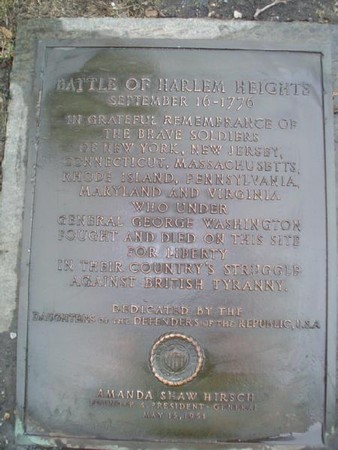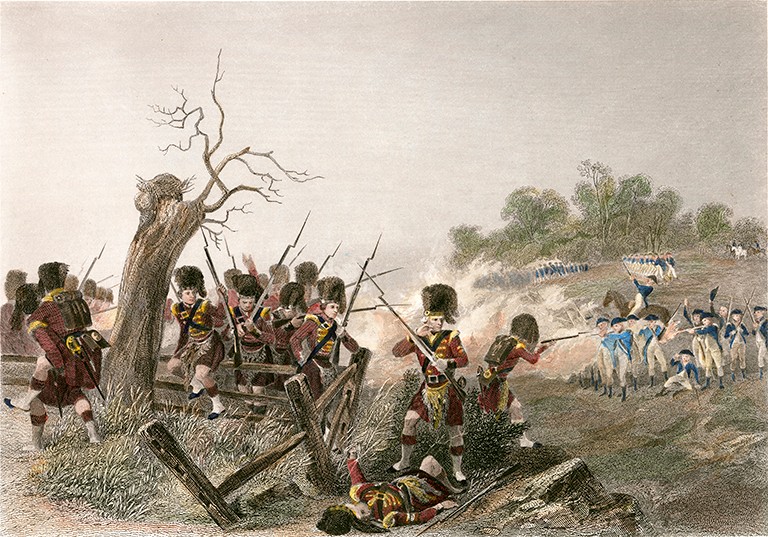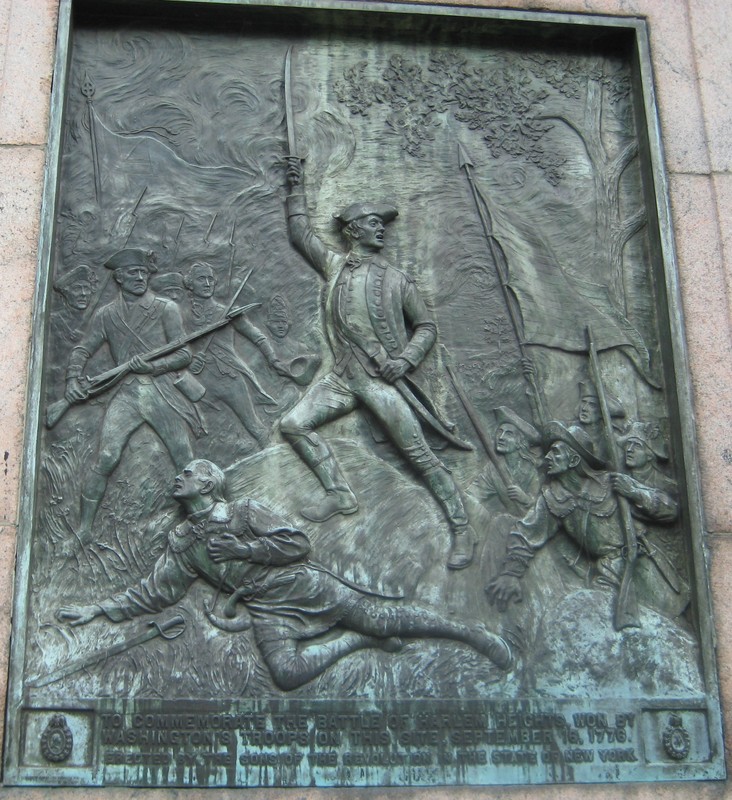Battle of Harlem Heights Plaque at Columbia University
Introduction
Text-to-speech Audio
Images
The Battle of Harlem Heights marker.

An artists depiction of the Battle of Harlem Heights, a small American victory that boosted morale following the loss of Long Island.

The Harlem Heights memorial plaque. Although the battle" was but a minor engagement, Harlem Heights showed the untested rebels that they could hold their own against the British.

Backstory and Context
Text-to-speech Audio
Following the Americans' loss at the Battle of Long Island, General George Washington's men struggled to hold their ground against General William Howe's army. On September 15, 1776, the British arrived at Kipp's Bay, prompting Washington to relocate his men to Harlem Heights. The next day, Captain Thomas Knowlton and his group of rangers descend into a lower plateau known as Hollow Way on Washington's orders. There, the group encounter British forces, leading Knowlton to evacuate his men away from the scene while Washington pushed forward.
Washington ordered his men to continue forward in an effort to bait the British onto the northern plateau. His plan was successful, allowing a second force to sever potential British reinforcements from reaching the southern plateau. Upon realizing their now-tenuous situation, the isolated British began to withdraw as American reinforcements arrived. Washington's men engaged the British, and Knowlton was killed during that fight.
After about two hours of battle, British forces were running low on ammunition and isolated from their supply lines, forcing them to withdraw. Eventually, the British received reinforcements, negating Washington's temporary advantage and forcing him to withdraw his men. Allthough unable to fully press his advantage, this event marked the first American victory in the New York Campaign-a series of battles and skirmishes that saw the British quickly take control of North America's leading port city. The victory at Harlem Heights bought time for the rest of Washington's army to make a more orderly withdrawal from New York so they could fortify Fort Washington and Fort Lee. As a result, Washington's army was able to offer a stronger defense when the two armies met again at the Battle of White Plains.
Sources
1- "Fighting for New York: Battle of Harlem Heights." About Edutcation. Accessed June 01, 2016. http://militaryhistory.about.com/od/americanrevolution/p/American-Revolution-Battle-Of-Harlem-Heights.htm. 2- "Battle of Harlem Heights." Battle of Harlem Heights. Accessed June 01, 2016. http://www.britishbattles.com/harlem.htm. 3- "Harlem Heights." Harlem Heights. Accessed June 01, 2016. http://www.nyfreedom.com/harlemheights.htm.
